Sights and Activities
Below are the places we saw and activities completed while visiting South Korea:
Busan
Jagalchi Fish Market: we were able to enjoy some raw and barbeque fish in the country’s largest fish market.
Busan Modern History Museum: the museum took us through Busan’s development from the opening of the port in 1876 to the modern emergence of the city’s industrial powerhouse. The exhibits also included the Japanese invasion period, material on how the Oriental Development Company practically enslaved Koreans, and the Korea-US relations.
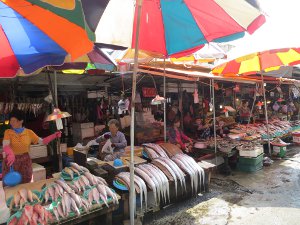

Igidae Park: we hiked for about two hours in this park on the trails adjacent to the ocean with magnificent views of the Busan skyline.
Busan Cinema Center: known for the longest free cantilever roof in the world, this modern building has many twists and turns. We had the opportunity to enjoy a movie in the outdoor cinema.
Beomeo-sa Temple: with its beautiful architecture and located on the base of mountains this temple is one of Busan’s most important. We enjoyed a guided tour of the main grounds and then hiked in the surrounding mountains to reach the North Gate (Bukmun) of the Geumjeong Fortress.
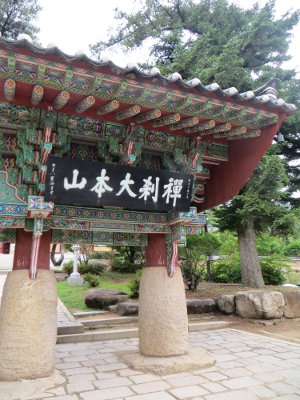
Seoul
Cheonggyecheon Stream: a highway was demolished to build this stream in the middle of the urban city. We walked through a short section of this 5.8km beautifully landscaped oasis with walkways, footbridges, waterfalls, public art.
City Hall: this uniquely designed modern structure is supposed to be a reinterpretation of traditional Korean design with the cresting wave providing shade, like eaves found on palaces and temple roofs.
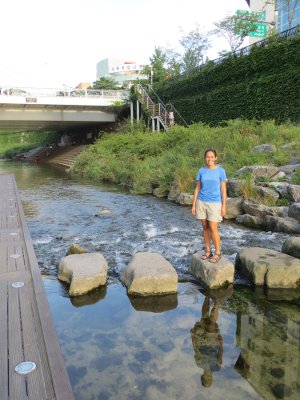
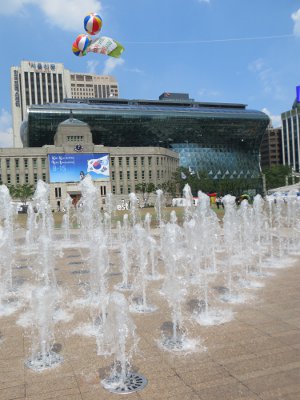
Myeong-dong Catholic Cathedral: we viewed this Gothic-style cathedral from the inside and outside. It was built in 1898 and became a national symbol of democracy and human rights during military rule.
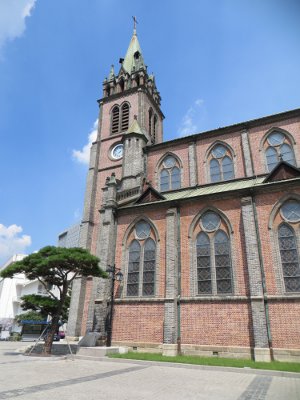
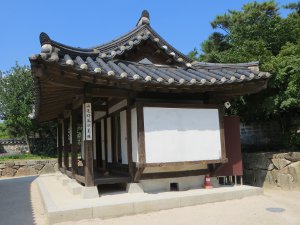
Namsangol Hanok Village: this touristy village contains many traditional houses, hanoks.
Namsan Park and N Seoul Tower: we took a three-hour hike passing fortress walls and great views of the city to highest point of this park and the location of the tower. At the tower, we were rewarded with 360-degree views of the city and with many heart shaped locks with names from previous lovers that have strolled to this destination for their date.
Sungnyemun – South Gate: commonly known as Namdaemun, it was destroyed by arson in 2008 and took four years to reconstruct it. The gate at night looks stunning standing on an island amid major roads.
National Museum of Korea: the museum had a collection of Korean ancient art, calligraphy, and sculptures.
War Memorial of Korea: this museum documents the history of warfare in Korea and concentrates on the Korean War (1950– 53). Our visit inspired us to write of this time period, please be sure to read our article.
Noryangjin Fish Market: we had dinner at this massive indoor fish market.
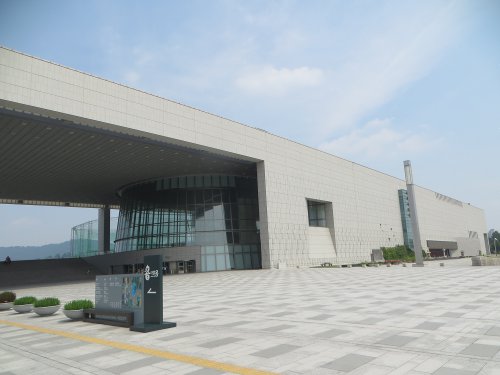
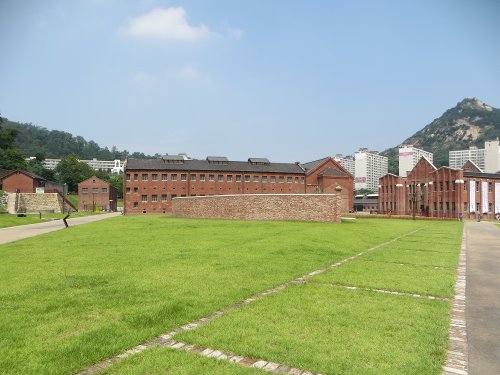
Seodaemun Prison History Hall: this former prison turned museum displays the various torture techniques employed by the colonial Japanese on Korean patriots. We walked through the punishment chambers, claustrophobic cellblocks, and outdoor yards that were also used by the Korean authorities after independence. But the details of how it continued to be used by Korea’s various dictatorships in the postwar years right up until its closure in 1987 were not disclosed.
Gwangjang Market: we had lunch in this market full of food vendors. The food was tasty, but the only thing was that we didn’t completely know what we were eating! We know we had pork face, pork blood sausage, and the rest was unknown: we think it may have been chicken skin and feet.
Changdeokgung Palace: this Unesco World Heritage palace was originally built in the early 15th century. It was destroyed during the Japanese invasion in the 1590s and rebuilt in 1872. The name of the palace is translated into Palace of Illustrious Virtue. We took a tour of the complex to learn about the traditional korean roofs, korean home heating system (ondol system), and how they built palaces and temples based on Feng Shui principles.
Bukchon Hanok Village and the Bukchon Traditional Culture Center: Bukchon, menaning North Village, is home to around 900 hanok, traditional Korean homes. It was pleasant to walk around the neighborhood and admiring the entry doors and roofs. The Culture Centre is housed in a hanok and has a small exhibition about the construction and heating system of these traditional homes.
